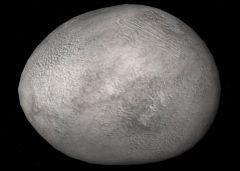Difference between revisions of "Hiiaka"
Jump to navigation
Jump to search
m (Arvil moved page User:Arvil/Sandbox02 to Hiiaka: Move to article page.) |
(Fixed labels.) |
||
| (2 intermediate revisions by the same user not shown) | |||
| Line 1: | Line 1: | ||
{| cellpadding="2" cellspacing="0" style="margin:25px 0 0 10px; border:3px solid lightsteelblue;width:250px; font-size:90%; font-family:'Arial','Helvetica'; float: right; clear: right;"Template in Orbiter" | {| cellpadding="2" cellspacing="0" style="margin:25px 0 0 10px; border:3px solid lightsteelblue;width:250px; font-size:90%; font-family:'Arial','Helvetica'; float: right; clear: right;"Template in Orbiter" | ||
| − | !bgcolor="lightsteelblue" colspan="2" align="center" | | + | !bgcolor="lightsteelblue" colspan="2" align="center" |Hiʻiaka |
|- | |- | ||
|colspan="2" align="center"|[[Image:Hiiaka-Haumeazip-Orbiter2006P1.jpg|240px]] | |colspan="2" align="center"|[[Image:Hiiaka-Haumeazip-Orbiter2006P1.jpg|240px]] | ||
| Line 10: | Line 10: | ||
|Name||align="right"|Hiʻiaka | |Name||align="right"|Hiʻiaka | ||
|- | |- | ||
| − | |width="30%"|Reference body||align="right" width="30%"|[[ | + | |width="30%"|Reference body||align="right" width="30%"|[[136108 Haumea]] |
|- | |- | ||
!bgcolor="lightsteelblue" colspan="2"|Planetary mean orbits | !bgcolor="lightsteelblue" colspan="2"|Planetary mean orbits | ||
| Line 47: | Line 47: | ||
|} | |} | ||
| − | '''Hiʻiaka''' is the outer and larger moon of 136108 Haumea discovered by [[w:Michael E. Brown|Mike Brown]] and his team in January 2005 and is named after one of the daughers of Haumea and patron goddess of the island of [[w:Hawaii (island)|Hawaii]]. | + | '''Hiʻiaka''' is the outer and larger moon of [[136108 Haumea]] discovered by [[w:Michael E. Brown|Mike Brown]] and his team in January 2005 and is named after one of the daughers of Haumea and patron goddess of the island of [[w:Hawaii (island)|Hawaii]]. |
== 136108 Haumea in Orbiter == | == 136108 Haumea in Orbiter == | ||
| Line 75: | Line 75: | ||
[[Category:Celestial bodies|Hiiaka]] | [[Category:Celestial bodies|Hiiaka]] | ||
[[Category:Solar System|Hiiaka]] | [[Category:Solar System|Hiiaka]] | ||
| − | [[Category: | + | [[Category:Natural satellites|Hiiaka]] |
[[Category:Trans-Neptunian objects|Hiiaka]] | [[Category:Trans-Neptunian objects|Hiiaka]] | ||
Latest revision as of 02:29, 25 October 2024
| Hiʻiaka | |
|---|---|

| |
| Hiʻiaka from Haumea.zip in Orbiter 2006P1 | |
| Designation | |
| Name | Hiʻiaka |
| Reference body | 136108 Haumea |
| Planetary mean orbits | |
| Epoch | 2006.26643835616 |
| Semimajor axis (a) | 49500000 m |
| Eccentricity (e) | 0.050 |
| Inclination (i) | 0.0417700423611744° (0.0007290247679 radian) |
| Longitude of the ascending node (LAN, ☊) | 10.4411959648128° (0.18223324743193 radian) |
| Longitude of periapsis (ϖ) | 48.485283851623° (0.84622784197486 radian) |
| Mean longitude (L) | 211.505119800568° (3.55975678720682 radian) |
| Selected physical parameters | |
| Mean radius | 155000 m |
| Mass | 3.767×1019 kg |
| Rotation elements | |
| SidRotPeriod | 4133475.78624576 seconds (47.841 days) |
| SidRotOffset | 0 |
| Obliqutiy | 4.09803308368269 |
| LAN | 0 |
| Note | *Elements given are from Hiiaka.cfg (Haumea.zip) |
Hiʻiaka is the outer and larger moon of 136108 Haumea discovered by Mike Brown and his team in January 2005 and is named after one of the daughers of Haumea and patron goddess of the island of Hawaii.
136108 Haumea in Orbiter[edit]
Hiʻiaka was introduced to orbiter with the release of Haumea.zip add-on in November 2008.
| Add-on | Source | Version | Author | Type | Release Date | Compatibility | Wiki article |
|---|---|---|---|---|---|---|---|
| Haumea (2003 EL61) v2.0 | O-F Resources | v2.0 | Piper | Scenery | 4 November 2008 | ||
See also[edit]
Gallery[edit]
Animation of images of Haumea and two moons taken by Hubble in May 2020
from Wikimedia Commons
| edit The Solar System | |
|---|---|
| Central star |
Sun (Sol) |
| Planets |
Mercury - Venus - Earth - Mars - Jupiter - Saturn - Uranus - Neptune |
| Natural satellites |
Moon - Phobos - Deimos - Io - Europa - Ganymede - Titan - more... |
| Add-ons |
Planets - Dwarf Planets - Small objects - Natural satellites - Alternative star systems |

